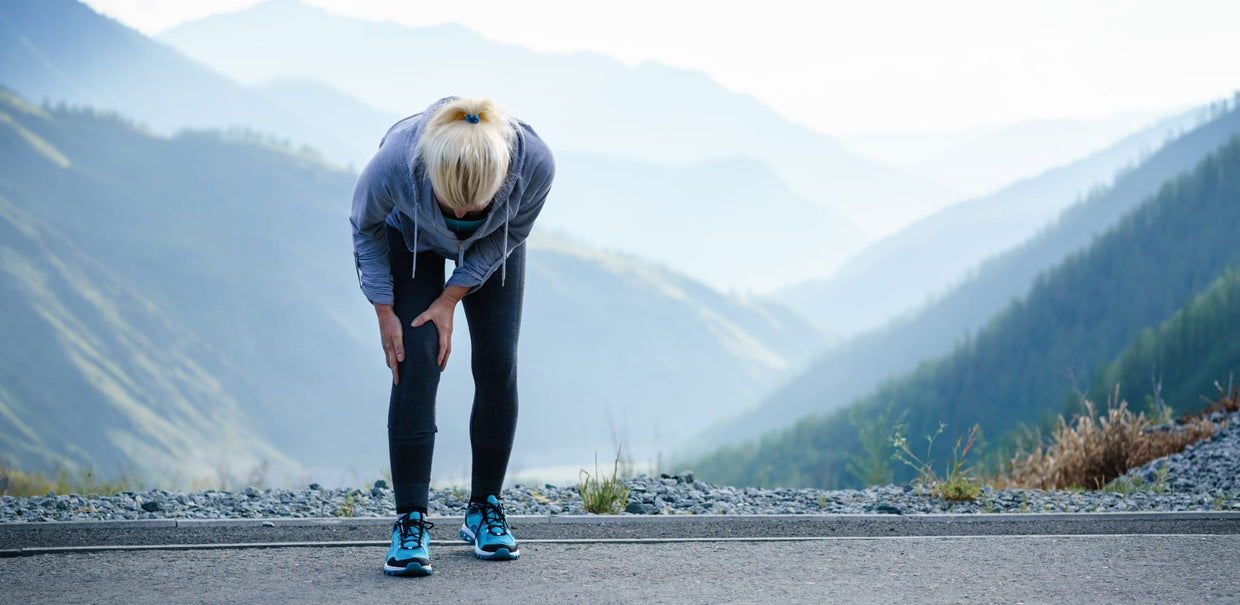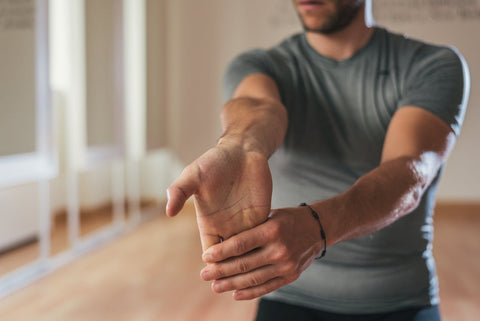

Learning from marathon runners
Running a marathon is always going to be a real bucket list achievement. Hats off to everyone who trains for months through sunshine and storms, swaps pina coladas and pizza for isotonic drinks and chicken, and dedicates their spare time to racking up the miles instead of the box sets.
We salute you. And we know it’s worth every minute of focus and dedication for the moment when you run through the finish line and get that medal.
Runner’s knee
With the London Marathon coming up next month, we’ve been thinking about what the rest of us can learn from marathon runners. They put their knee joints through massive stress to achieve their goal. So, even if you’re someone who prefers to walk, rather than run, we wondered if we could pick up some tips from our marathon friends on how to protect our knees.
First of all, let’s look at how running can cause pain in the knees:
- Patellofemoral Pain Syndrome – the patella is the kneecap bone that is positioned between the thigh bone and shin bone. It acts as a form of protection and is cushioned by cartilage. This syndrome occurs when the patella rubs on the femur bone underneath, causing pain to the front of the knee.
- Iliotibial Band Syndrome – your iliotibial band is a thick band of connective tissue that runs all the way down the side of your leg, from the hip to just below the knee. It works together with your thigh muscles to stabilise your knee when you’re running. Either the iliotibial band or the tissue around it can become damaged or inflamed, resulting in pain on the side of the knee.
Keep those knee joints moving
Here are a few of the tips that marathoners share. They’re also helpful for those of us who aren’t quite ready to run 26.2 miles, but simply want to keep our knee joints moving smoothly.

1. Stretch it out
Gentle stretches will help release the muscles around your knee, reducing the pressure and enabling your knee to stay more mobile and flexible. Try a lunging calf stretch, where you stand with your feet a short distance apart, and lunge forward, one leg at a time. Don’t extend your knee beyond your foot – you should be able to see your toes. Hold the position and feel the stretch down the leg that’s behind you.
Pilates and yoga are also excellent ways to stretch the area around your knees. Take up a downward dog pose, then ‘pedal’ your feet in turn. You should feel the muscles along your calves release.
Also, for an easy all-body workout, check out our article on chair yoga.
2. Drink water
When you’re a marathoner, there are all kinds of fancy gels and drinks you can try, but plain old water remains at the top of the list for hydration. The same is true for the rest of us.
The cartilage around your knee that acts like a shock absorber is 80% water, so it makes sense to drink plenty of water as part of your 6-8 recommended glasses of fluid a day. That way, you’ll be hydrating yourself, hydrating your cartilage and helping to keep your knee joints moving smoothly.
3. Choose the right shoes

You don’t need to buy the slickest, most high-tech trainers in the shop, but a good supportive pair of shoes will help protect your knee joints from unnecessary additional strain.
Runners are passionate about finding the best pair of trainers for their specific needs, and it’s worth taking a similar approach if you have stiff knee joints. Try out several different types. You may find that a flat, flexible walking shoe, possibly with an insole for additional cushioning, will provide the support your knees need.
4. Eat for knee health
The right nutrition is vital for anyone who wants to get a personal best in a marathon. A healthy, balanced diet will also help you to strengthen your knees, build connective tissue and keep your joints moving smoothly.
Foods that contain Vitamin C will help to build collagen, which plays an important role in knee cartilage. Fill up on strawberries, red peppers, cabbage and broccoli. Bump up your Omega-3 by eating oily fish such as salmon and mackerel, and boost your antioxidants by eating vegetables such as carrots, sweetcorn, spinach and sweet potatoes.
Our iMOVE human joint supplement is also a great way to help you maintain healthy joints. Its unique triple-action formula helps with stiffness and lubricates your joints to get you moving freely.
5. Mix it up
In the run up to a marathon, runners will make sure they create a varied exercise routine, including everything from quick hill sprints to longer runs as well as occasional sessions at the gym to improve their core strength.
By mixing up your exercise routine, you’ll make sure you work out different muscle groups in your body, giving yourself the best chance of avoiding injury and taking some of the strain off your joints. Think about exercises that work on your strength, balance and flexibility.
6. Give it a rest

Every marathon runner knows that rest and recovery are a vital part of the process. It’s all part of training smarter, not harder.
It’s the same for us non-marathon-running mortals. Listen to your body and know when it’s the right time to put your feet up, rather than insisting on heading out for a hike when you’ve already clocked up several miles that week. Have a look at this article on how to spot the signs that you’re overdoing it.
How about you?
Are you a marathoner with any advice to share? Or have you found any exercises that help with stiff knee joints? Please join the conversation on Facebook and Instagram. We’d love to hear from you.






